
The temporary exhibition presents the past and present of Szeklerland through over 300 objects.Continue reading
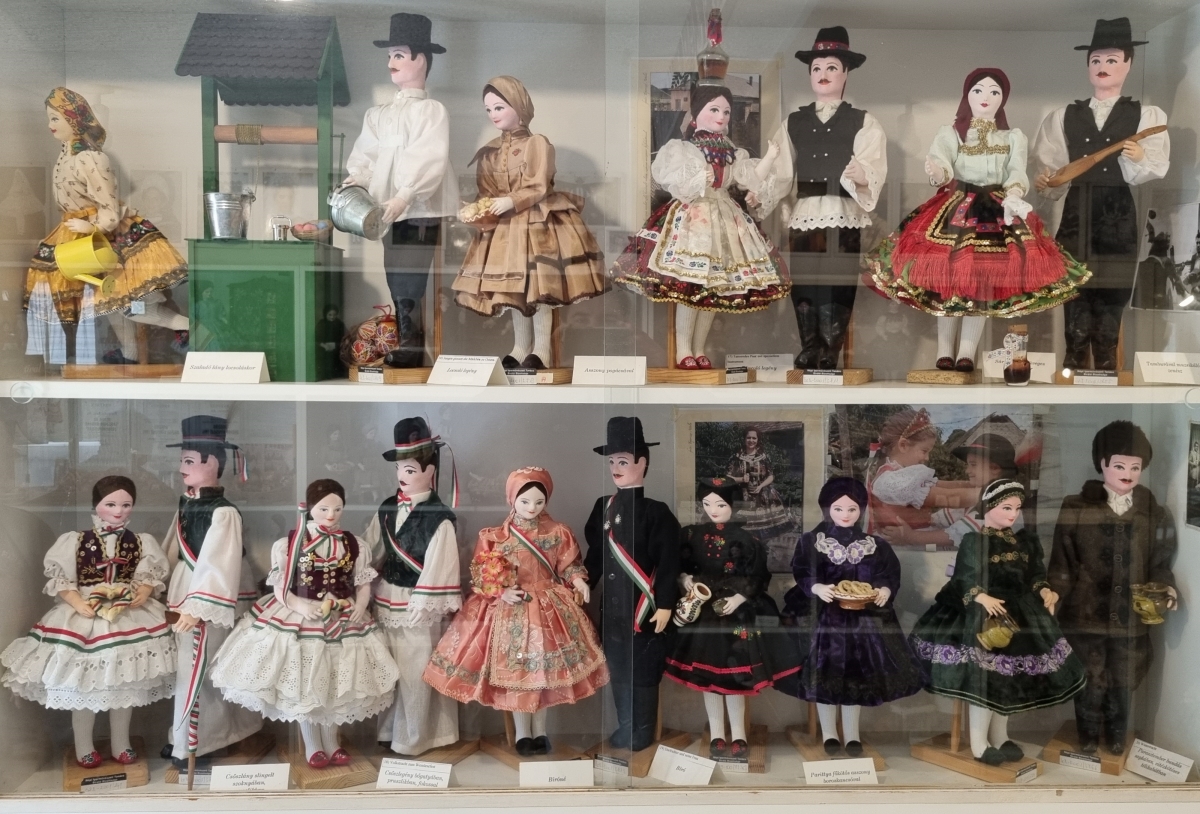
The Doll Museum in the village of Decs in the heart of the picturesque Sárköz region of Southern Hungary is not simply a collection of random dolls dressed in ornate folk costume. Rather, it is a unique and entirely authentic historic account of a region famous for its wine, embroidery, and art. Arguably no one had succeeded in depicting the glory, but also the tragedy of the community of Sárköz through art as masterfully as the founder of the Doll Museum, “Aunt Bözsi.”

Sunrise viewed from the vineyards near the village of Decs. Photo: Hungary Today
Most people have only ever come across the name of the Sárköz region via the surname of former French president Nicolas Sarkozy, who is known to have some Hungarian ancestors.
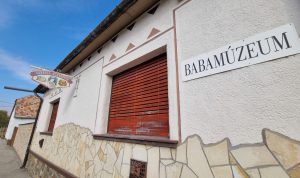
The Doll Museum in Decs. Photo: Hungary Today
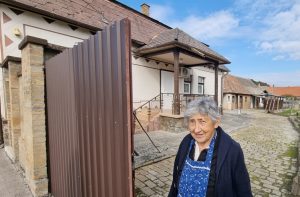
Bözsi Farkasné Pál at the entrance to her house. Photo: Hungary Today
Approaching the museum that is housed in an ordinary looking building, we are greeted by the owner. “I am Bözsi Farkasné Pál, which is a colloquial form for Elizabeth, but everyone knows me as Aunt Bözsi (English pronunciation – “Boeuzhee”), even I sometimes almost sign my name like this”, she says jokingly.
“The roots of this museum go back to my youth, when as peasant girls we did not get to leave our villages, and almost none of us had the opportunity to go to study elsewhere. Here in Decs we used to have a home-ware industry cooperative, where many of the peasant women have found a job. This was convenient for us as we all married early. In the old days they used to say that when a girl from Sárköz turns 18, she arrives at the doorstep of old age. I myself started to work at the coop when I only turned 14, just after finishing grammar school.”
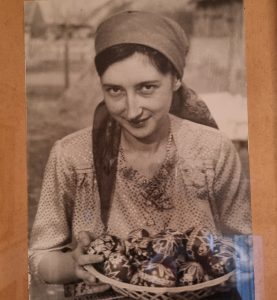
Erzsébet Farkasné Pál in her youth. Photo: Hungary Today

The hands responsible for all the beauty in the museum. Photo: Hungary Today
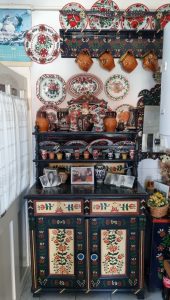
Hand-painted cabinets. Photo: Hungary Today.
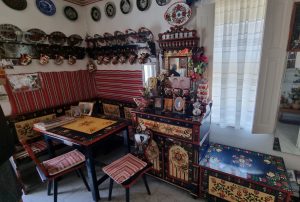
Furniture decorated by the creator of the museum now used as a working kitchen. Photo: Hungary Today
“We have learnt embroidery, creating macramé and painting eggs. I have painted Easter eggs for some 30 years as a contract worker. From 1970 on I was earning a living through painting traditional folk motifs on furniture, and this went on for some ten years. This kind of furniture was quite trendy back then. We did not get a special training to learn the techniques, we simply went out to the cottages and villages near the vineyards and copied folk art on vellum paper, which we later transferred to our work.”
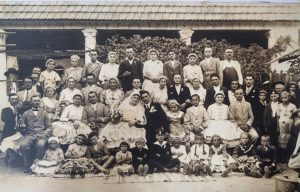
Period photo of the local community. Photo: Hungary Today

Elizabeth Farkasné Pál shows off her collection of dolls. Photo: Hungary Today
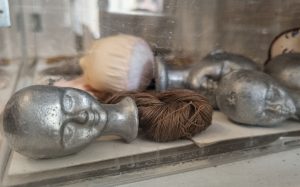
Some of the lead templates used for the dolls. Photo: Hungary Today
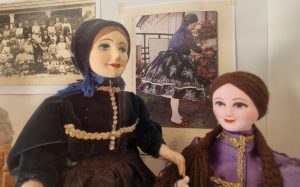
Photo: Hungary Today
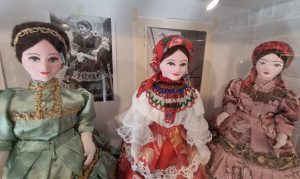
Photo: Hungary Today

Photo: Hungary Today
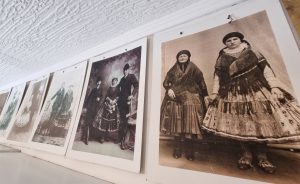
Photo: Hungary Today
“This is the period when I started making dolls, both for my own entertainment, as well as for sale. My husband was at his wits end because our entire house was bursting with dolls, he could not even sit down. Thus when I reached pension age, I thought to myself that I need to show something of the skills that I have learnt for the benefit of my community and family. The doll museum started with a simple glass cabinet in our entrance hall, where I put some of my best dolls. These then multiplied throughout the 30 years that I have been growing my collection.”

Photo: Hungary Today
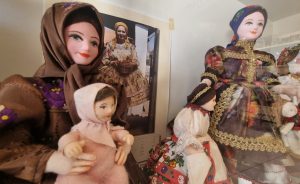
Photo: Hungary Today
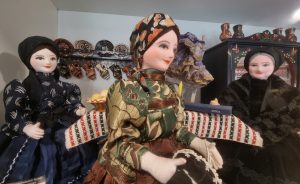
Photo: Hungary Today
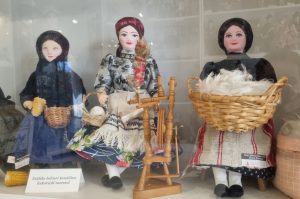
Photo: Hungary Today
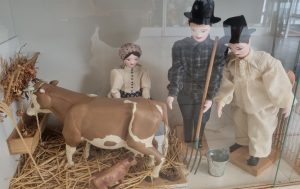
Photo: Hungary Today
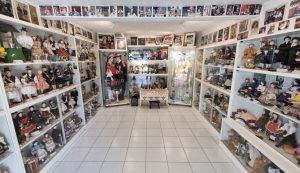
Photo: Hungary Today
“I have named this place “Scenes from the Life of Sárköz,” despite the fact that most people know it only as the “Doll Museum” (Babamúzeum). Those who come here to see the 200 dolls displayed get a personal guided tour from me. What I show them is not a doll museum as such, but the story of Sárköz’s rural life through these figures, from birth to death. They can see what baptism looked like, weddings, funerals, or harvest, milking the cow, etc. These dolls are authentic to the smallest detail, as they have been judged and authenticated by experts from the field. There was an group of eight experts from the Museum of Ethnography from the capital Budapest, who have checked and approved of all of my figures. I always inquired from the village elders as how they wore their dresses and how they had done their work, that is how I learnt about the smallest details.”
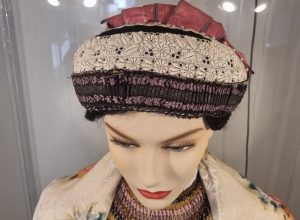
Photo: Hungary Today

Photo: Hungary Today

The famous Sárköz textiles with their typical red and black pattern. Photo: Hungary Today
“In Sárköz girls married extremely early – a 14 or 15 years old bride was not unusual at all. Their job was simply to give birth and then look after their child. This was roughly the age when girls have received their so-called confirmation in the protestant church, through which they have become fully fledged members of the community. After this, they were free to get married. This was the case in all five villages that overwhelmingly belonged to the Reformed (Calvinist) protestant community: Őcsén, Decs, Bátaszék, Alsónyék, Sárpilis.
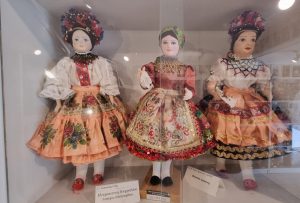
Photo: Hungary Today
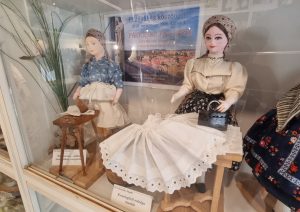
Photo: Hungary Today
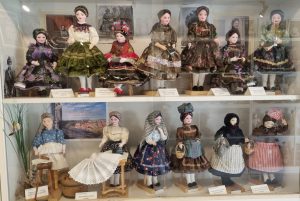
Photo: Hungary Today
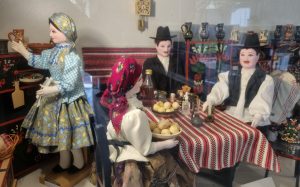
Photo: Hungary Today
“I had three Hungarian presidents here in the Museum: Árpád Göncz, Ferenc Mádl, and Pál Schmitt. I had the opportunity to welcome representatives of both the right and left of the Hungarian political landscape, former PM Ferenc Gyurcsány was among our guests, for example. But I treat everyone equally as a guest: politicians or members of pensioners’ clubs, it does not make any difference to me. I give respect to everyone and treat them as my guests. When President Mádl visited the museum, a member of his security detail told me that he only had 30 minutes for the visit. So I replied to him that I did not invite him to come here, nor am I going to tell him to leave. I would not dream about telling the president of the republic that your 30 minutes are up Sir, now you have to leave! And when after 30 minutes the president’s secretary gently tapped on his shoulder, indicating that it is time to go, the head of state turned to her with the words: when Aunt Bözsi had finished her tour, that is also when I am going to finish here. The president’s final words were: “I cannot decide whether I like the dolls or Aunt Bözsi more.”
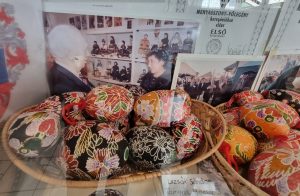
Painted Easter Eggs and photos of a presidential visit. Photo: Hungary Today
“It was always a challenge to find the traditional textiles for the dolls’ costumes,” continues Elizabeth. “When I could not get hold of any, I used to go to my godmother and ask here to rip off a piece from her old skirt, so that I can finish one of my exhibits. But sometimes I used silk from the duvet or curtain cloth.”
“It was typical for Sárköz to have single child families. This was very unusual for the age, but the reason behind this was that parents wanted to keep the inheritance together for one child, they tried to avoid dividing the land or properties among multiple heirs. This has eventually lead to the demographic collapse of the region, as the one child tradition invariably lead to emptying villages. Children born here had no siblings, and I myself have only one daughter. Most of the children, for some reason, were female, and the village had sustained its population by intermarriage from other settlements, where the grooms have moved in to the Sárköz region. This used to be a purely Calvinist village but today only some 12 people come to church on a regular basis. Streets are empty, houses are unoccupied, except for those where Romani families live.”

Photo: Hungary Today
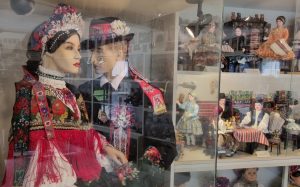
Photo: Hungary Today

Photo: Hungary Today
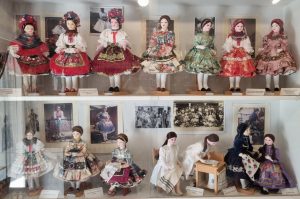
Photo: Hungary Today
Should one take a walk at the local cemetery, one is shocked at the number of graves belonging to 16 to 20 years old girls, as we have witnessed in the village. The reason behind this is again the local tradition of allowing only one child. When young women conceived for the second or third time after their very early marriage, they usually went to see a local quack doctor to abort the pregnancy. This had resulted in many botched interventions, infections and even deaths among teenage women. This is quite a dark aspect of Sárköz’s local history, but Aunt Bözsi’s dolls reflect this with unflinching authenticity.
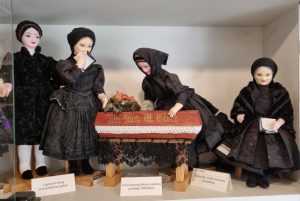
There was an unusually high death rate among teenage women due to botched abortions. Photo: Hungary Today
“I am too old now to maintain this museum. I am considering selling it to the municipality of Decs so that the collection stays in the local community. When I was younger, I had a job, I was looking after our child, I was also working at the fields, so I am sometimes asking myself how on earth was I able to create this museum. But now that I have no more strength to continue, my wish is to keep the dolls here in the village. The dolls only depict the life and customs in Sárköz, there are none with costumes from other regions. This is solely ours,” stresses our guide.
“Last year I have approach the mayor of Decs to see if we could find a place for the doll museum, but as yet no final decision has been made. My preference for this is to keep it in Decs, because really only locals can fully appreciate these scenes depicted by the dolls. However, if I do not succeed in keeping them here, I would consider selling the collection to an outsider.”
When we asked locals around the village, whether they have seen the museum, some who were born and lived their entire life in Decs confessed to not visiting it ever.
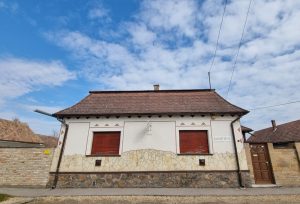
The Doll Museum in Decs. Photo: Hungary Today
“I always mourn, when I am forced to sell something. When I have to part with an old skirt, for instance, I always think of my elders, who have preserved these items even through personal hardship. They understood the intrinsic value of these. So when I sell the collection, I want it in a contract that the items can only be taken away after my death.”
When asked whether she would consider creating a few dolls through commission, aunt Bözsi replied that she would be inclined to selling some unexhibited items from her personal collections, rather than creating new ones. The price she had quoted for her amazing dolls was so low that out of respect for her art we would not repeat in our report.

The region of Sárköz (marked by red). Photo: HUN-REN CSFK Földrajztudományi Intézet
Featured Image: Hungary Today